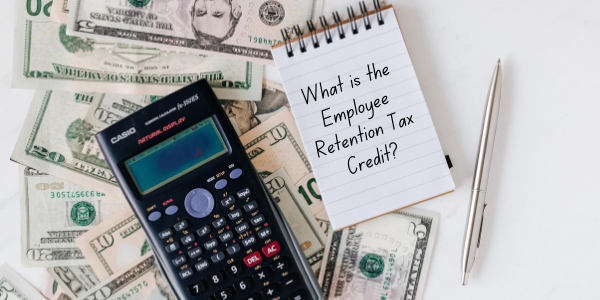7 Pitfalls to Avoid When Disciplining Employees
Management is a tough job! From motivating employees to handling customer complaints – there’s never a dull moment when it comes to running a company. You love to see your employees succeed, but when they make mistakes, what’s your course of action?
ProService Hawaii’s HR experts have years of experience helping businesses navigate the murky waters of employee discipline. Below, we share some points on how to handle disciplining an employee by highlighting the most common pitfalls to avoid.
1. Skimming over Handbook Training
The best way to avoid having to exercise disciplinary action is emphasizing the value of policy and handbook training during the on-boarding process. There will likely be a learning curve with new hires, but providing thorough training on professional conduct expected will help curb the occurrence of future issues, not to mention thorough training will help keep your business out of trouble.
2. Emphasizing Discipline over Improvement
When meeting with your employee, communicate a genuine intention of support before addressing misbehavior. When an employee understands your meeting’s objective is to improve their performance rather than reprimand behavior, he or she is more likely to receive your advice more graciously.
3. Getting Emotional
Many companies are now run by the millennial generation; a generation that tends to favor a laissez faire (hands-off) management style which leads to developing more personable relationships with co-workers. This generally creates a more satisfying working environment, however, friendships between management and coworkers can become a problem when it comes to enforcing discipline.
Our advice to managers? Don’t let emotions decide your course of corrective action. Anger, disappointment, or fear of losing a friend (or your job) can all hinder an appropriate reaction.Take a step back, let hot emotions cool down, then address the issue professionally.
4. Assuming an Employee Knows their Behavior is a Problem
Before confronting an employee about their behavior, give the benefit of the doubt and be sure to ask if they’re aware of the issue. Asking about the details of the occurrence may help you and your employee clarify what might have gone wrong. Practicing empathy in this situation and explaining why a certain behavior is a problem will not only contribute to immediate resolution, but may also increase the level of trust between you and your employee.
5. Making it Personal
When an employee makes a mistake, it’s easy to criticize the employee rather than correcting the mistake an employee made. However, it’s important to address your employee’s behavior, and their behavior alone. Before confronting the issues at hand, take some time to highlight the areas of the employee handbook, company policy, or employee description where your employee fell out of alignment. By focusing your attention on communicating expected conduct, disciplinary action may then be received as professional development guidance rather than personal criticism.
6. Taking the Issue Public
If an issue is brought to your attention or occurs publicly, it’s always best to address your employee behind closed doors. When someone experiences the embarrassing experience of being reprimand in front of their peers, positive consequences rarely occur. Choosing discretion over public confrontation is always the better option.
7. Not Documenting the Incidents & Disciplinary Meetings
The most important element to appropriate action is documenting the corrective conversation with the employee. Many company/employee relationships are structured with an “at-will” agreement; meaning an employee is free to leave their company at any time for any reason, and a company can let someone go at any time, for any reason (except an illegal one). However, most managers have adopted the “three strikes, you’re out!” philosophy and many large corporations still require a documentation of offenses that lead up to the firing, as to ensure the reasons were legal.
To document the incident properly, issue a formal write-up and have the employee sign it after your meeting has concluded. We cannot emphasize enough: document every conversation during a dispute. This simple step could protect you and your company in more ways than we have words to mention.
Best Practice for Managers
Clarify expectations in the beginning
Mandatory training on your employee handbook, with an emphasis on expected conduct, will be your biggest asset to avoiding disciplinary action in the future. Of course you can’t avoid every mishap, but clarifying policies and expectations from the very beginning will be the best practice for creating a positive work experience for both you and your new employee. Hire slowly and be sure to invest solid training time into your new employee when on-boarding.
Communicate your plan of action when Disciplining Employees
Once your employee understands the issue, communicate a corrective plan of action. If the incident involves other parties, keep everyone in the loop. Or, if this is the employee’s “last strike”- be sure they understand that.
Clear communication during the corrective process will help to avoid misunderstandings, protecting the reputation of all parties involved. When in doubt, do your best to communicate “next steps” so nothing is left to assumption.
Work with a Human Resource professional
During a time of enforcing disciplinary action, having an HR professional to help navigate the nuances of correction will be incredibly helpful. Donna Jones, Senior HR Trainer of ProService Hawaii states;
One of the most common calls we receive is from employers who don’t know how to tell someone they have to let them go.
Not knowing how to handle employee discipline or discharge is a very common issue. But you’re not alone and there are local professionals to help you along.
In summary, the best tools for preventing and handling discipline will be clearly communicating expected behavior from your employee, a leader’s mentality (or a focus on helping your employee), and a Human Resource professional to provide council when you’re unsure of what action to take. Managing a team can feel like a lonely job sometimes, but ProService Hawaii is here for you.









